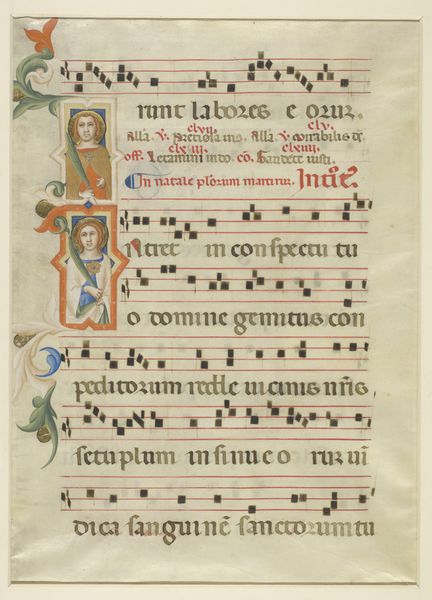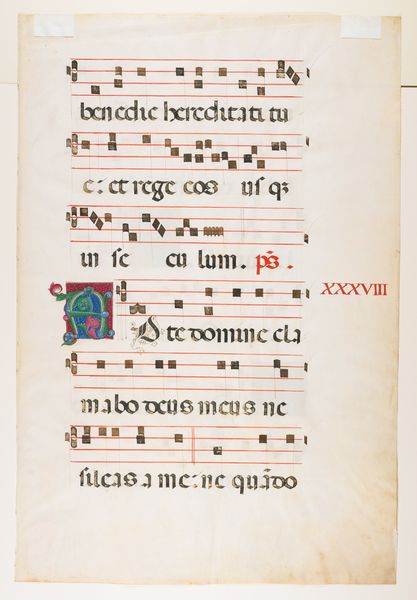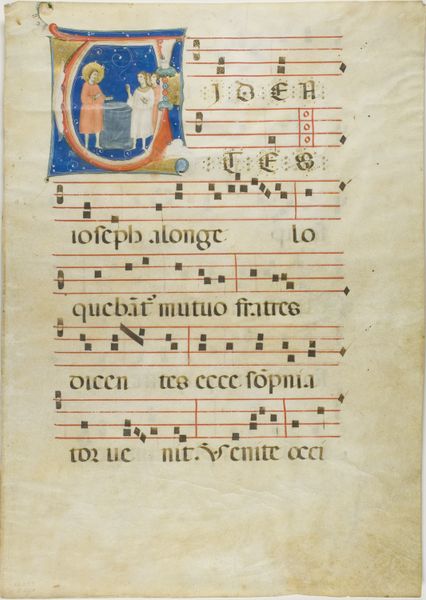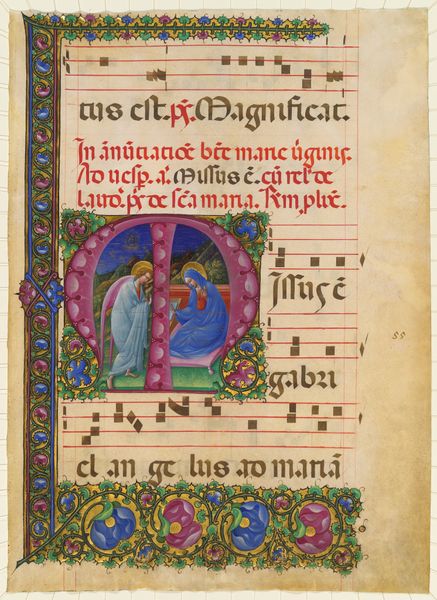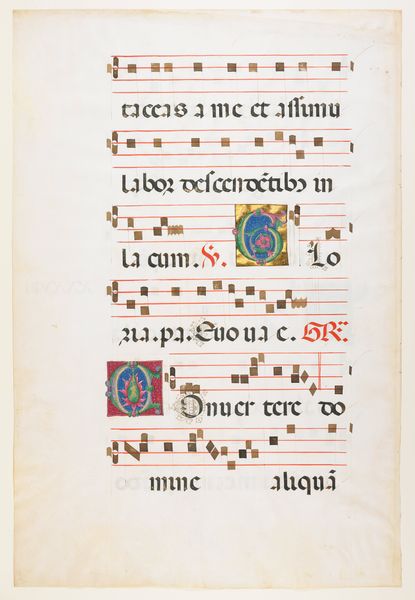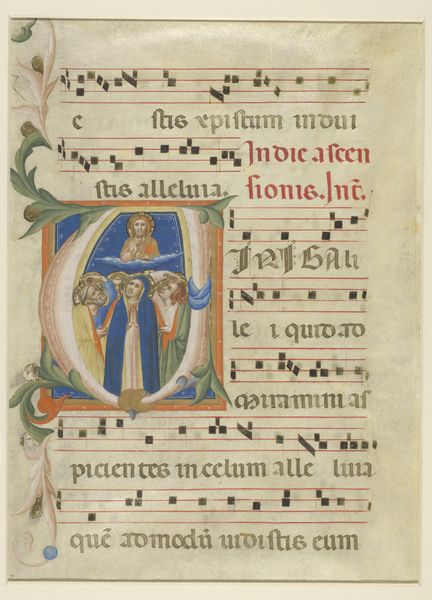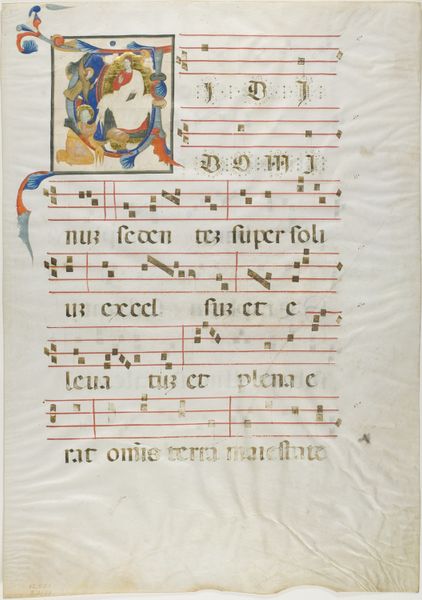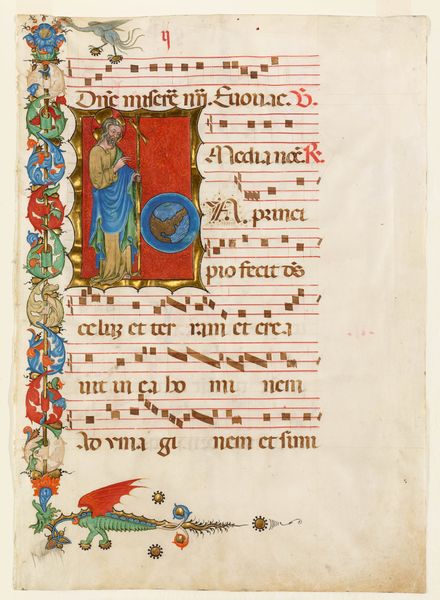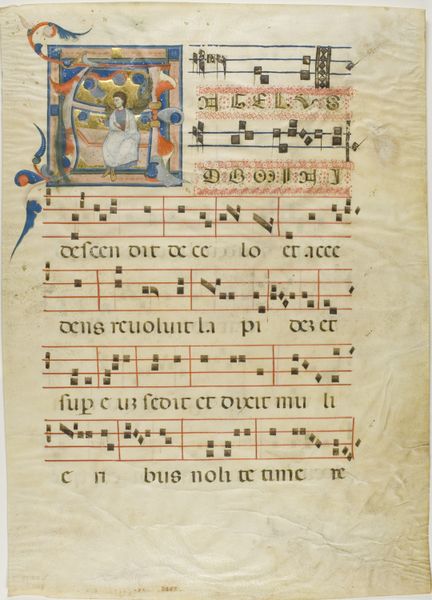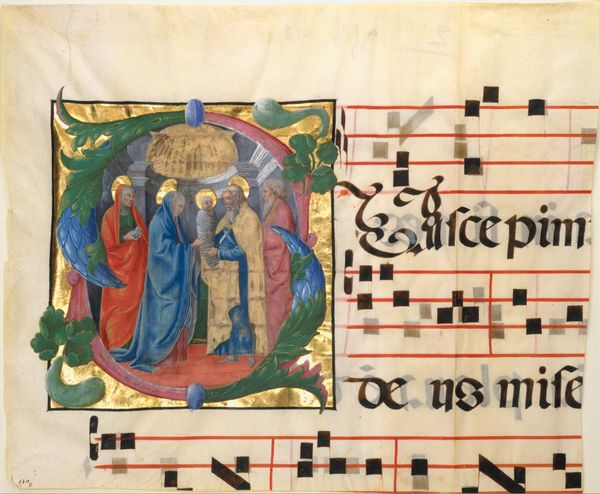
paper, watercolor, ink
#
byzantine-art
#
medieval
#
parchment
#
gothic
#
paper
#
watercolor
#
ink
#
watercolour illustration
#
miniature
#
calligraphy
Dimensions: height 555 mm, width 375 mm
Copyright: Rijks Museum: Open Domain
Curator: The Fragment of a Missal, specifically the initial O illustrating the celebration of Mass, comes to us from the hand of Lippo Vanni between 1342 and 1346. The miniature is rendered in ink and watercolor on parchment, showcasing both calligraphy and meticulous detail. Editor: There's a wonderful luminosity here, isn't there? The layering of color in the initial creates a jewel-like effect, drawing the eye immediately. The crispness of the script contrasts beautifully with the softness of the painted scene. Curator: Vanni and other artists producing illuminated manuscripts operated within a highly structured guild system. The materials were costly, the process painstaking, demanding immense skill and devotion to produce these sacred objects that served to reinforce religious authority, but also were of value to the wealthy people who had access to them. Editor: Absolutely, and it is important not to undermine that economic context of such artifacts, and at the same time you also can discern the geometric rigor and careful proportion in the design. The initial O anchors the composition. The red lines give that horizontal stability contrasting well with the shapes of the notes above and lettering, really compelling from a purely visual perspective. Curator: Considering its function, that initial would guide the choir to locate their place, its ornate embellishment a signifier within the book’s materiality and an encouragement to participate. How interesting when one considers the degree of special skill it must have taken, the price of materials like ground lapis, or gold leaf and ink...and how the labour reflects both the wealth that backs such production as well as devotional intensity. Editor: Indeed, and to consider too how this art movement became such an important foundation of the Renaissance art movement, that is to say, a close study and re-evaluation of Byzantine form and aesthetic. These miniatures reveal a structured color palette and strong structural integrity that is undeniable. Curator: Considering the social context—the labour practices involved in manuscript creation versus what the content intended to transmit—reveals how class structures both uphold, but can be subverted to carry many ideas at once. I always learn something from close looks and contextual digging. Editor: And it's a striking synthesis, as the close study is in itself a powerful tool of engaging history! I think it leaves us both plenty to ponder.
Comments
No comments
Be the first to comment and join the conversation on the ultimate creative platform.

